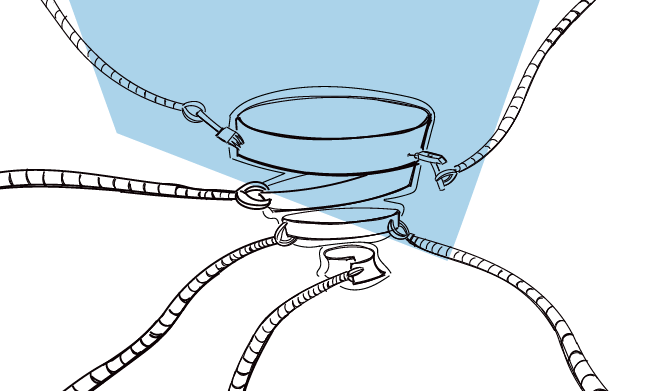Not all of your sales leads are equal in terms of quality. Even when it seems that at first glance they match your Ideal Customer Profile.
In this article, you’ll learn how to qualify new sales leads from the moment you first reached out to them all the way through to your first call or demo. With this information at hand, you’ll be able to spot which leads aren’t a good fit for your product and whether you should still pursue them or rather shift your focus to more promising contacts.
How to qualify new business leads?
Think about the qualification process as gold panning. In the times of Gold Rush, gold-seekers used to sieve out gold flakes and nuggets from gravel in rivers and streams. The goal of lead qualification is to sieve out the leads who are most likely to convert, so you can put your focus on them. They are the gold chunks you’re looking for.
In outbound sales, the qualification starts from prospecting. You make the initial selection of individuals you want to reach out to based on your Ideal Customer Profile. This step carries over to the whole lead generation process. That’s why it’s so important to keep your ICP updated as your company grows and develops over time.
You can read about creating an ICP in more depth and detail in this post:
What Does “Ideal” Really Mean in the Ideal Customer Profile? >>
However, as I mentioned at the beginning of this article, not all prospects that seem to match your ICP criteria will turn out to be quality leads. Some of the leads will be more likely to convert than the others. These are the ones you should put your focus on. But how to spot this difference? There are a few hints you should pay attention to.
What are the signs that a lead may not be the best fit after all?
They don’t respond to your follow-ups
Sometimes your busy leads may simply miss your message in their crowded inbox. Sometimes they may not have time to respond to you right away and then they simply forget. It’s ok to send them two or three follow-ups. But according to our research investing your time in writing and sending more than three follow-ups may not pay off in the end.
If you still don’t hear back from a prospect after a few contact attempts, it may simply mean that they are not interested. Perhaps they don’t have a business need for your product right now. Or they’re bound by a contract to a competitor of yours. There may be various reasons for why that is so. You can only be guessing.
For every campaign, there will always be a small percentage of prospects who won’t respond to you at all. It’s normal. Don’t pursue these prospects at all costs.
However, if the reply rate is lower than the average in your industry, it may mean three things:
#1 Your email copy did not catch on
Try adding some tweaks to your email copy to make it resonate better with your addressees. Sometimes even small amends make a big difference. Change the intro, come up with a different value proposition, try a more precise CTA. No need to make a revolution at once, simply test what works better.
#2 Your ICP needs reworking
Perhaps you’re barking up the wrong tree? People may not respond to you because they aren’t a good target for your product. It may not match their business needs or they don’t have a budget for it. Get all your team together and consider revising your ICP. Check how we did it.
#3 Prospects don’t get your emails
And if they don’t see your emails in their inbox, how can they respond?
Keep an eye on your email stats. If you notice a sudden decrease in your email open rate, it may be a sign that your emails go to spam instead of the main inbox, thus your prospects don’t see them. Here’s what to do about that.
Long story short: always follow up with your prospects, but only until the point when it’s still worthwhile. Typically, 2 or 3 follow-ups is enough for a prospect to reply. Those who don’t respond may not be the right fit after all.
They don’t show up for scheduled calls
So a prospect scheduled a demo with you, but eventually didn’t show up. Well, even though it was a waste of time for you, some unexpected situations happen in life. Follow up with such a lead to reschedule a meeting for a more convenient time.
However, when the same scenario repeats itself, it’s a sign your lead may not be worth pursuing. Even more so, when you don’t hear from them after sending them yet another follow-up. No-shows to scheduled meetings is a solid lead qualification criterium. Stop chasing the wrong ones and focus on tightening business relationships with those who are genuinely interested in your product.
The first thing they want to know is the price
Not the benefits of your solution for their business. Not how your product works. Their sole interest and reason for setting up a call with you is to learn the price. And quite often bargain it down.
If a prospect isn’t willing to understand the value of your product for their business and learn how to use it to achieve their goals before negotiating the price, it’s quite likely that they may churn pretty quickly. The bargain hunters may not be the first-class sales leads you’re looking for. Take these criteria into consideration when you qualify new leads.
They keep postponing the purchase
In B2B sales, the buying process is rarely a straightforward one. There are usually a few decision-makers involved. And of course, there’s also a matter of budget. It may happen that a prospect waits with the purchase decision due to those two factors. It’s ok to give them some time and follow up with them again.
However, if yet for another time you hear from your prospect that they:
- “Need more time to consider”,
- “Will get back to you”,
You may want to qualify such leads as rather not promising.
They lost engagement and motivation to buy
That’s a true salesperson’s nightmare. After numerous touchpoints, a lead turns cold. You kept nurturing them for quite some time, yet they became disengaged. Their replies get shorter. They keep postponing the meetings. You can tell that their motivation to buy is decreasing.
There may be various reasons why a lead lost their interest. It’s often quite difficult to identify the cause because these leads usually aren’t willing to share it with you. It might have been a budget-related reason. Or they might have been only window shopping and comparing various solutions. Or perhaps another decision-maker sabotaged the idea of buying your product. Unfortunately, usually, the cause of a lead’s disengagement will remain a mystery.
If you notice that a lead lost motivation to buy your product, don’t pressure them more. Instead, you may want to move them to a “lead reactivation” campaign and try reaching out to them in a few months.
The level of lead’s motivation and engagement will help you qualify business leads as the ones who are more quickly to convert and those whose buying process may be a bit longer or more complex. This way you will be able to distinguish between low- and high-hanging fruit.
What’s in it for you
When it comes to lead generation it’s always better to put quality before quantity. Not only will it save you a lot of time and effort, but it’ll also ultimately influence your bottom line.
So don’t be afraid to give up on leads who aren’t the right fit for your business and aim your efforts at promising contacts.
READ ALSO

How to Generate B2B Leads Online the Outbound Way?
Generating new B2B leads in a crowded online space is a tricky game. With competitors on your trail and constantly modified search engine algorithms, you have to struggle to provide a growing number of visitors to your website each month. And also make sure the traffic is of high quality. But you can also reverse the scenario and instead of waiting for the leads to come to you, you can reach out to them first. What is more, you decide who you want to contact. That’s the idea behind generating sales leads the outbound way. Curious how the process looks like? Read on.

How to Build a Sales Pipeline to Turn Your Outbound Leads into Customers?
In business, nothing can be left to chance. Otherwise, you won’t make much progress. When it comes to sales, in order to turn more leads into customers, you need to set your internal guideposts that will make the whole process more effective. That’s what a sales pipeline is at its core. Let me show you how to build a sales pipeline from scratch following this six-step tutorial.

Land High-Quality SEO Clients With This Cold Email Tactic
For any SEO agency to thrive, it needs a steady flow of customers. Recently, I've been contacted by Rad Basta, CEO of Four Dots, who kindly described how an SEO agency can do to get high-quality clients. Here's what his process looks like.

